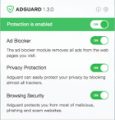What is CoordinatorData
CoordinatorData is supposed to be an app that will improve the browsing experience, but according to security researchers, this program is an adware. Many computer users consider adware, browser hijackers, spyware, malware as the same thing. They are all forms of malicious software that each behave differently. The word ‘adware’ is a combination of two words ‘ad’ and ‘software’. Adware shows advertisements on an infected computer. Not very dangerous for PC users, but very profitable for the the software publishers.
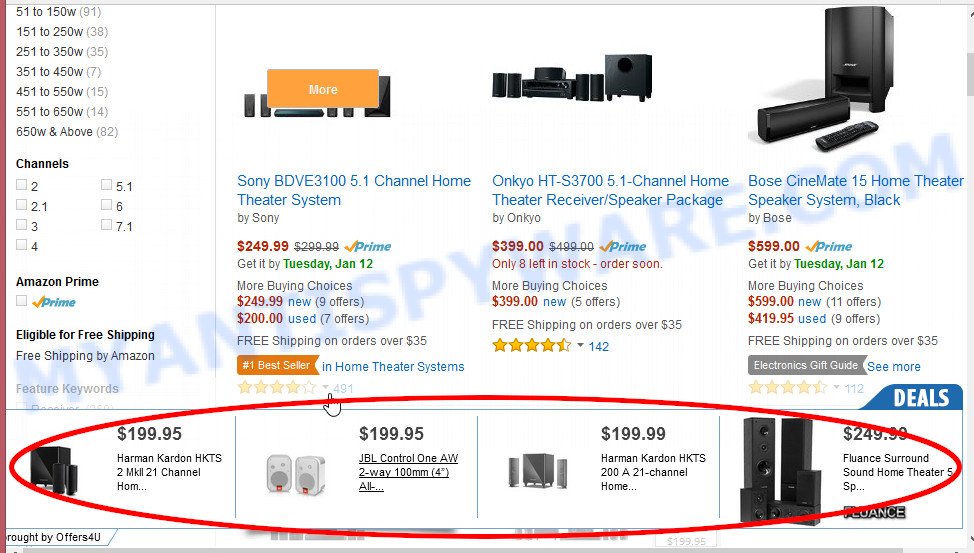
Unwanted ads
Does adware software steal your privacy data? Adware can be used to collect your sensitive information to get profit. Adware software can analyze your browsing, and gain access to your privacy info and, subsequently, can transfer it to third parties. Thus, there are more than enough reasons to remove adware software from your MAC.
Below we are discussing the methods which are very useful in removing adware software. The guidance will also assist you to remove CoordinatorData from your MAC OS for free.
How does CoordinatorData get on your computer
Adware software usually is bundled within free programs . So, when you installing free applications, carefully read the disclaimers, select the Custom or Advanced installation method to watch for optional applications that are being installed, because some of the software are potentially unwanted apps and adware.
Threat Summary
| Name | CoordinatorData, CoordinatorData 1.0 app |
| Type | adware software, potentially unwanted application (PUA), popup advertisements, pop-up virus, pop ups |
| Symptoms |
|
| Removal | CoordinatorData removal guide |
How to remove CoordinatorData adware
The answer is right here on this web page. We have put together simplicity and efficiency. It will allow you easily to clean your MAC OS of CoordinatorData adware. Moreover, you can choose manual or automatic removal solution. If you’re familiar with the Apple Mac then use manual removal, otherwise run the free anti malware utility created specifically to get rid of adware. Of course, you may combine both methods. Read this manual carefully, bookmark it or open this page on your smartphone, because you may need to close your internet browser or restart your computer.
To remove CoordinatorData, execute the steps below:
- Remove profiles created by CoordinatorData
- Uninstall CoordinatorData related programs through the Finder
- Remove CoordinatorData related files and folders
- Scan your Mac with MalwareBytes
- Remove CoordinatorData from Safari, Chrome, Firefox
- How to stay safe online
- To sum up
Remove profiles created by CoordinatorData
CoordinatorData can install a configuration profile on the Mac system to block changes made to the browser settings. Therefore, you need to open system preferences, find and delete the profile installed by the adware.
Click the System Preferences icon ( ![]() ) in the Dock, or choose Apple menu (
) in the Dock, or choose Apple menu ( ![]() ) > System Preferences.
) > System Preferences.
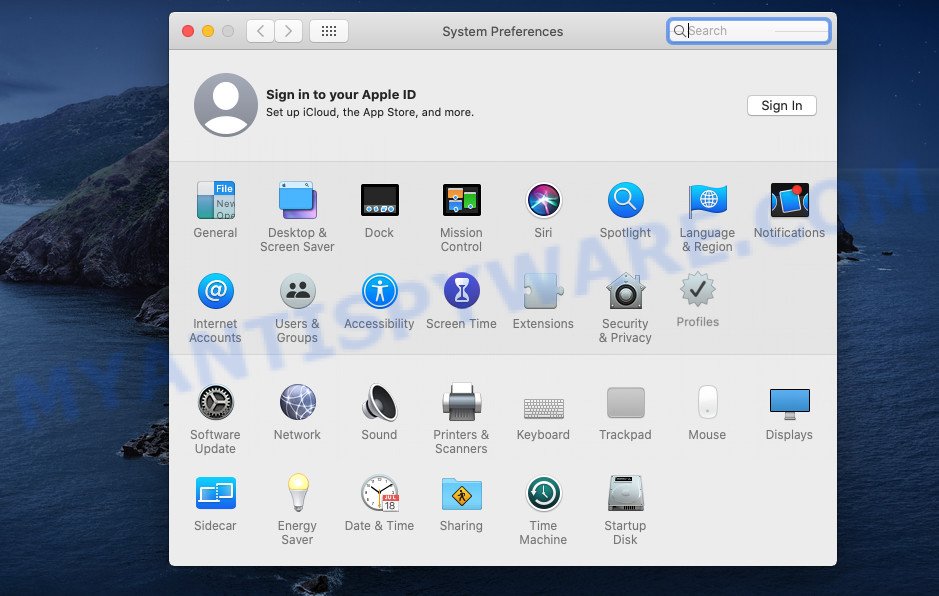
In System Preferences, click Profiles, then select a profile related to CoordinatorData.
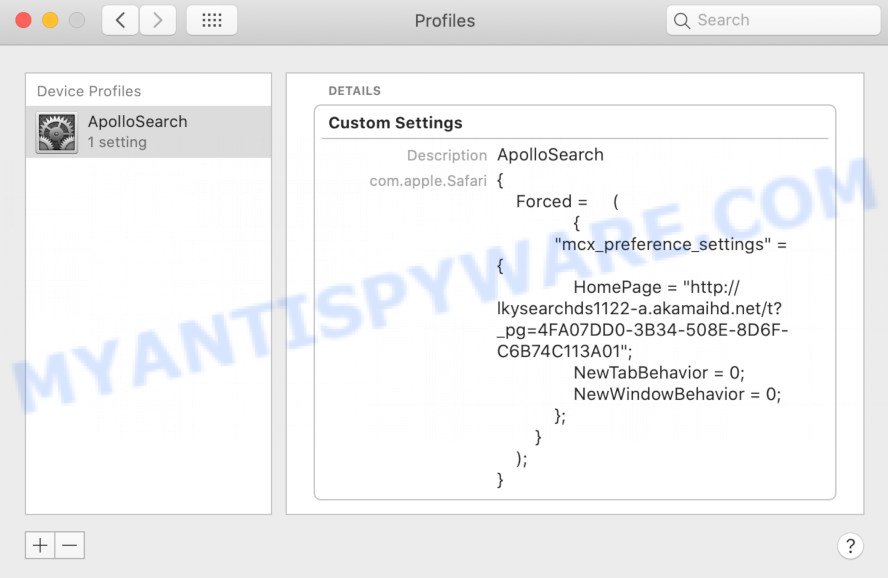
Click the minus button ( – ) located at the bottom-left of the Profiles screen to remove the profile.
Note: if you do not see Profiles in the System Preferences, that means there are no profiles installed on your Mac device, which is normal.
Uninstall CoordinatorData related programs through the Finder
In order to get rid of CoordinatorData you need to do is to remove unknown and dubious applications from your MAC OS using the Finder. When uninstalling adware software, potentially unwanted programs and browser hijackers, check the list of installed apps and try to find suspicious programs and uninstall them all. Pay special attention to recently installed applications, as it’s most likely that CoordinatorData сame along with it.
Open Finder and click “Applications”.
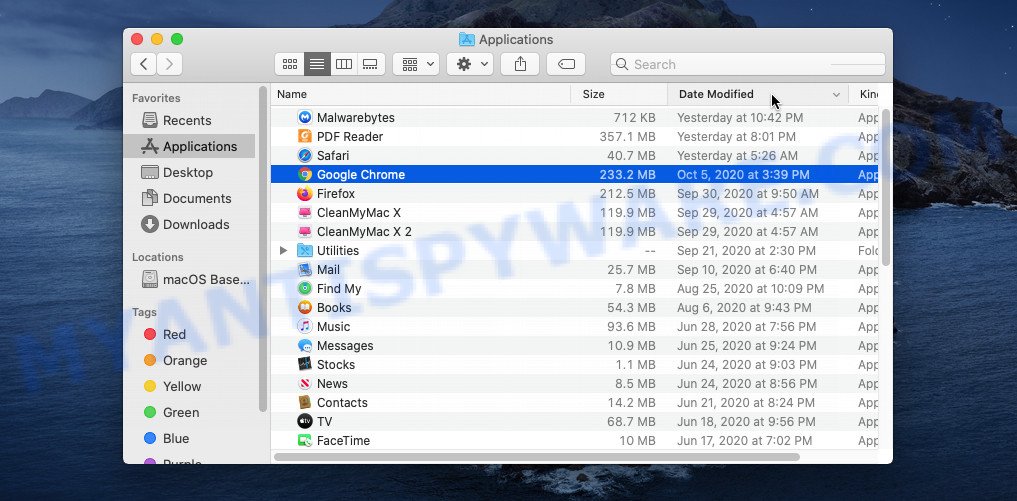
Carefully browse through the list of installed applications and get rid of all dubious and unknown applications.
After you have found anything dubious that may be the CoordinatorData or other potentially unwanted program, then right click this program and choose “Move to Trash”. Once complete, Empty Trash.
Remove CoordinatorData related files and folders
Now you need to try to find CoordinatorData related files and folders, and then delete them manually. You need to look for these files in certain directories. To quickly open them, we recommend using the “Go to Folder…” command.
Click on the Finder icon. From the menu bar, select Go and click “Go to Folder…”. As a result, a small window opens that allows you to quickly open a specific directory.

Check for CoordinatorData generated files in the /Library/LaunchAgents folder

In the “Go to Folder…” window, type the following text and press Go:
/Library/LaunchAgents
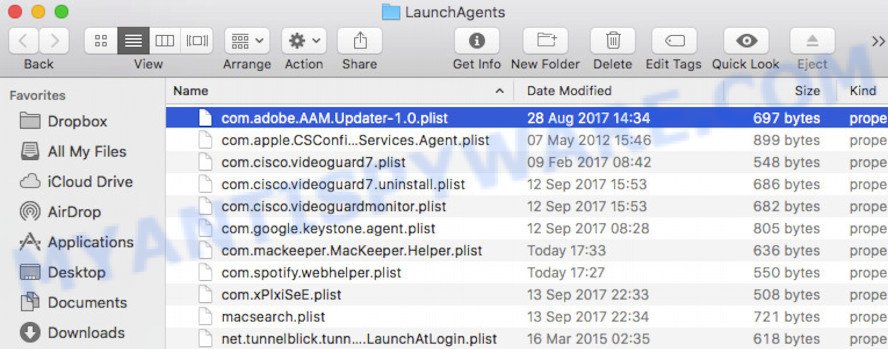
This will open the contents of the “/Library/LaunchAgents” folder. Look carefully at it and pay special attention to recently created files, as well as files that have a suspicious name. Move all suspicious files to the Trash. A few examples of files: CoordinatorData.plist, search.plist, com.machelper.plist, macsearch.plist and installapp.plist. Most often, PUPs, adware and browser hijackers create several files with similar names.
Check for CoordinatorData generated files in the /Library/Application Support folder

In the “Go to Folder…” window, type the following text and press Go:
/Library/Application Support
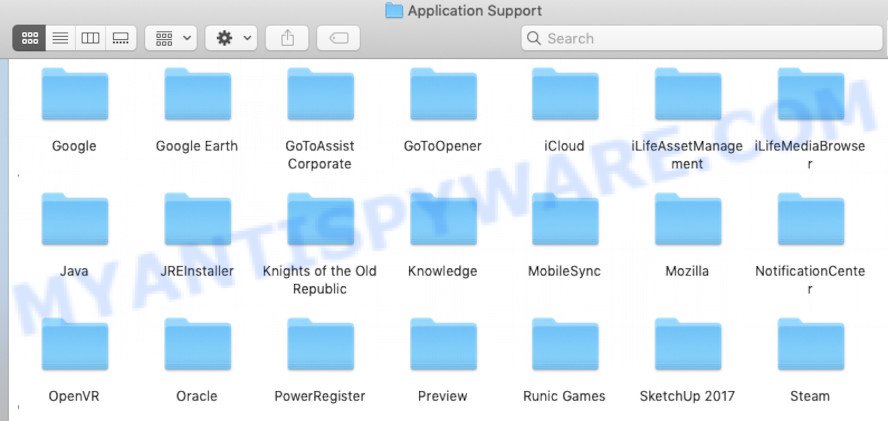
This will open the contents of the “Application Support” folder. Look carefully at its contents, pay special attention to recently added/changed folder. Move all suspicious folders to the Trash.
Check for CoordinatorData generated files in the “~/Library/LaunchAgents” folder

In the “Go to Folder…” window, type the following text and press Go:
~/Library/LaunchAgents

Proceed in the same way as with the “/Library/LaunchAgents” and “/Library/Application Support” folders. Look for suspicious and recently added files. Move all suspicious files to the Trash.
Check for CoordinatorData generated files in the /Library/LaunchDaemons folder
In the “Go to Folder…” window, type the following text and press Go:
/Library/LaunchDaemons

Carefully browse the entire list of files and pay special attention to recently created files, as well as files that have a suspicious name. Move all suspicious files to the Trash. A few examples of files to be deleted: com.macsearch.plist, com.installapp.plist, com.CoordinatorData.plist, com.machelper.plist and com.search.plist. In most cases, adware, potentially unwanted programs and browser hijackers create several files with similar names.
Scan your Mac with MalwareBytes
Manual CoordinatorData removal requires some computer skills. Some files and system entries that created by the adware software can be not fully removed. We recommend that run MalwareBytes to scan the Mac computer. Moreover, this program will help you to delete toolbars, adware, PUPs and browser hijackers that your machine can be affected too.
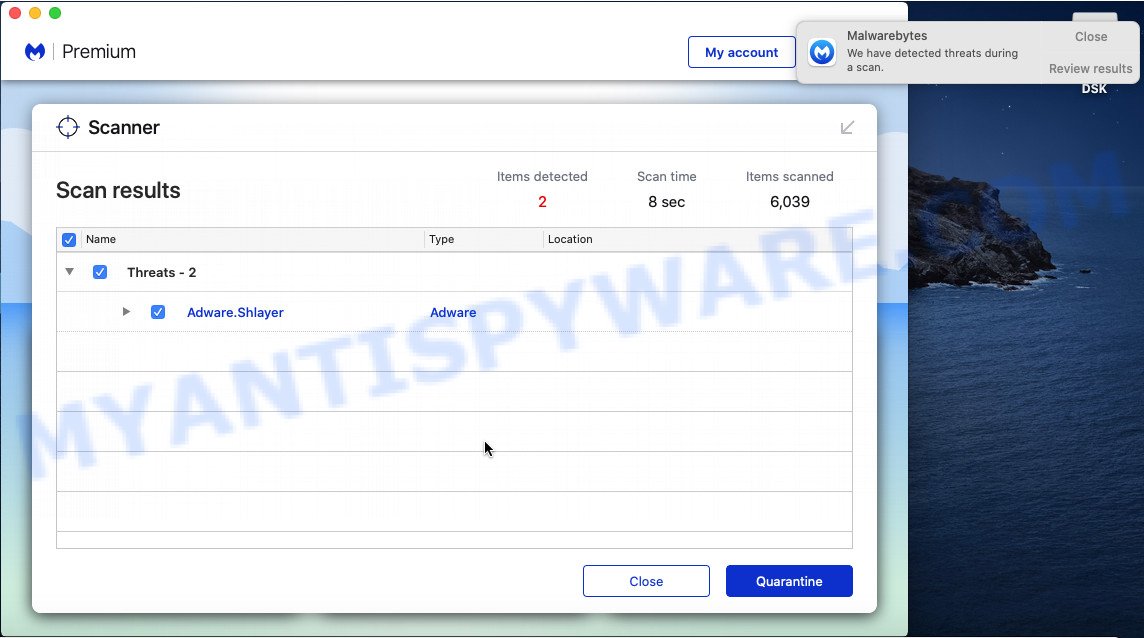
- Please go to the following link to download MalwareBytes Anti Malware.
Malwarebytes Anti-malware (Mac)
21024 downloads
Author: Malwarebytes
Category: Security tools
Update: September 10, 2020
- Once the download is complete, please close all applications and open windows on your computer. Run the downloaded file. Follow the prompts.
- The MalwareBytes Anti Malware (MBAM) will launch and show the main window.
- Further, click the “Scan” button for scanning your machine for the CoordinatorData . A scan may take anywhere from 10 to 30 minutes, depending on the number of files on your MAC OS and the speed of your machine. While the utility is scanning, you can see how many objects and files has already scanned.
- Once the scan is complete, MalwareBytes will display a scan report.
- Review the report and then press the “Remove Selected Items” button.
- Close the Anti Malware and continue with the next step.
Remove CoordinatorData from Safari, Chrome, Firefox
This step will show you how to delete malicious extensions. This can remove CoordinatorData adware and fix some surfing issues, especially after adware infection.
You can also try to remove CoordinatorData by reset Google Chrome settings. |
If you are still experiencing problems with CoordinatorData adware removal, you need to reset Firefox browser. |
|
How to stay safe online
One of the worst things is the fact that you cannot stop all malicious web-pages using only built-in Microsoft Windows capabilities. However, there is a application out that you can use to block undesired web-browser redirections, ads and pop ups in any modern browsers including Mozilla Firefox, Safari and Chrome. It’s called Adguard and it works very well.
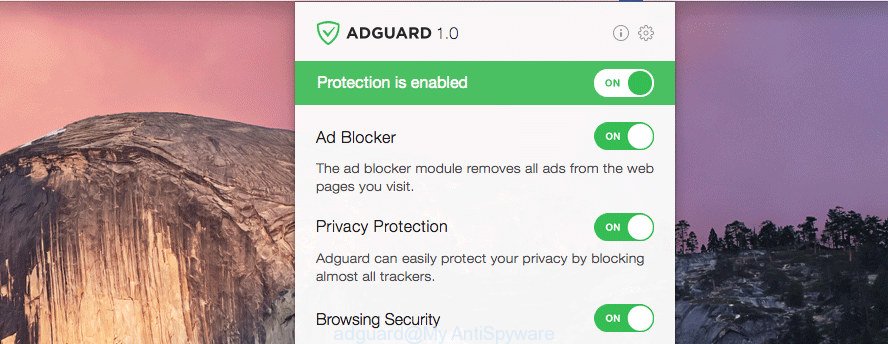
Download AdGuard on your MAC system from the link below.
3782 downloads
Author: © Adguard
Category: Security tools
Update: January 17, 2018
When downloading is complete, start the downloaded file. You will see the “Setup Wizard” screen. Follow the prompts.
Each time, when you start your MAC system, AdGuard will start automatically and stop annoying ads, block harmful and misleading web-sites.
To sum up
Once you have done the instructions shown above, your machine should be clean from this adware and other malicious software. The Mozilla Firefox, Safari and Chrome will no longer show any unwanted ads when you browse the Internet. Unfortunately, if the few simple steps does not help you, then you have caught a new adware software, and then the best way – ask for help.
Please create a new question by using the “Ask Question” button in the Questions and Answers. Try to give us some details about your problems, so we can try to help you more accurately. Wait for one of our trained “Security Team” or Site Administrator to provide you with knowledgeable assistance tailored to your problem with the CoordinatorData adware.

